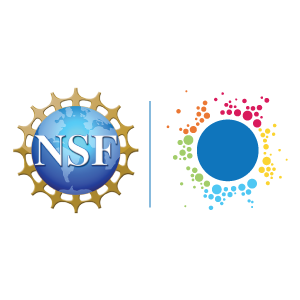In the recent webinar, Leadership and Communication: Co-Creating Alignment and Awareness, NSF INCLUDES Network members shared strategies, resources, and tools related to effective leadership and communication.
This Network Spotlight highlights enduring lessons about effective leadership and communication relevant under any circumstances, but which have been particularly important during this time. Our presenters were: Mimi Lufkin, CEO Emerita, National Alliance for Partners in Equity (NAPE) and the PI for the NSF INCLUDES DDLP, IM STEM; Brianna Blaser, Ph.D., Project Coordinator for AccessINCLUDES at the University of Washington’s DO-IT Center; and Jenniffer Santos-Hernández, Researcher for Minority SURGE Capacity in Disasters.
Contributed by Mimi Lufkin, IM STEM
Use consistent communication with partners
Our communication structure has two components. We have a strong steering committee and leadership group that is working to build and manage the network that we are creating across the six intermountain states. We also have a network of over 1,000 individuals who have been involved in providing feedback, as well as engaging in activities.
Our leadership communication is very regular. The backbone management team meets every two weeks. Our steering committee meets monthly. We have work groups that are chaired by each of the steering committees, and those work groups are creating deliverables in the project and trying to roll out the scalable activities that the network has identified.
The thing that is interesting about our communication process is that we are a virtual network and always have been. We do not meet face-to-face on any kind of a regular basis other than at our annual conference.
We have a quarterly virtual network meeting where we share best practices from the six states in an effort to scale those efforts. We have a website where everything is posted, including all the recordings from the virtual meetings and every e-newsletter. We also have a LinkedIn group and Twitter feed.
In terms of the processes, those things haven’t changed in this current environment. We meet virtually all the time, so this is sort of business as usual. Besides that, all the people that we work with are now meeting from home so things like a dog barking in the background or a child sitting in someone’s lap has become more standard. And those things are all great. We are all for it.

Contributed by Brianna Blaser, PhD, AccessINCLUDES
Use accessible communication formats
What we do is increase the success of people with disabilities in challenging academic programs and careers, using the application of universal design and developing and disseminating publications and videos. Our work focuses both on institutional change and direct intervention. Some of our work is with employers and educators to think about how to ensure that their environments are welcoming and accessible to individuals with disabilities. Some of it is focused directly on students with disabilities themselves, doing career development and mentoring work with them.
A lot of what we do is virtual to begin with as well. We use e‑mail for our communication, and part of the reason behind that is it’s very accessible. A lot of other tools are not particularly accessible. Even with social media, there are inaccessible images that don’t have alternative text. In some ways email is an older technology, but even with our students it is an opportunity for them to practice being professional over email, which they will likely need to do when they move into their career.
For years we used phone calls because we couldn’t find online meeting software that was particularly accessible. Then the University of Washington started a partnership with Zoom to increase its accessibility. It required running meetings a little differently. We have benefited from being able to use features that you couldn’t in a phone call. We have started using breakout rooms in the past few months as folks have been asking for more opportunities to interact. There was a really positive response and folks asked for more time in the breakout rooms.
We have been putting more time in for informal discussion and networking, so folks aren’t just listening to presentations during our meetings. Part of what we have been struggling with the past few months is figuring out how to make sure we are staying in touch with people without doing too much when people are feeling overwhelmed.

Contributed by Jenniffer Santos-Hernández, Minority SURGE Capacity in Disasters
Respond to community stakeholders’ needs
I’m in Puerto Rico and recovering from the earthquake and the hurricane. We were dealing with how we were going to provide continuity to those projects and how we were going to deal with issues– access to technology and communications.
Because of the changing demographics in Puerto Rico, many of the community leaders are elders who are not that familiar with Zoom and other technologies. It requires preparing detailed instructions in Spanish, step by step, so they can download the app and learn how to navigate. The research assistants were available to help them on the phone.
With students, we decided to do check in calls to see how they were doing. We organized virtual games to have them relax and share some of the experiences at the same time make sure that everyone was okay. Sometimes check in calls may not be that important, but with the whole discourse around COVID we are focused on our body and physical health and not so much on our state of mind, so we amplify how that is important to show up and say hi and see how your friends are doing.

***
Thank you to Mimi Lufkin, Brianna Blaser, and Jenniffer Santos-Hernández for sharing their experiences. Connect with Mimi, Brianna, and Jenniffer through the member directory so that as the NSF INCLUDES National Network, we can continue to learn and work together. You can access their full conversation and related resources if you “Register to Join the National Network”.

